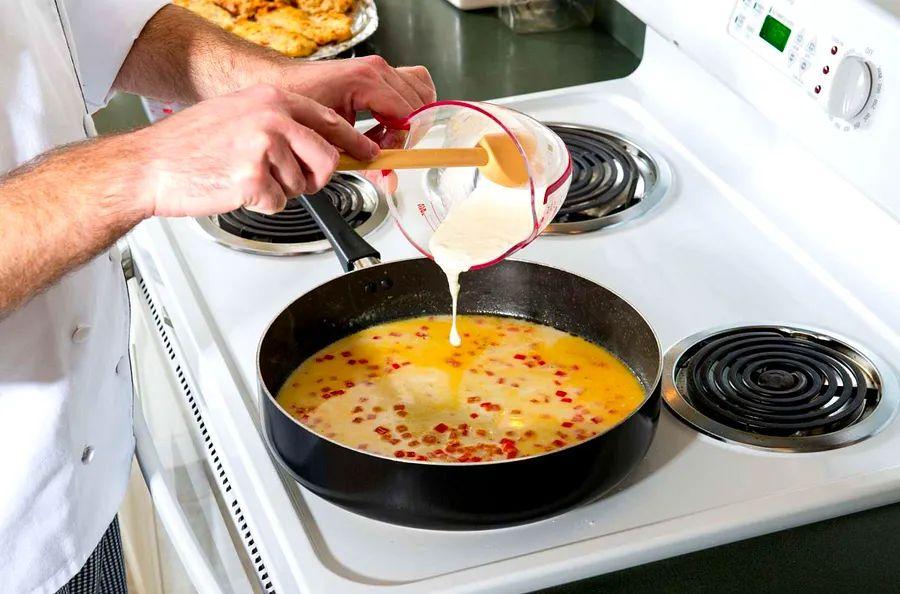Essential Guidelines for Heating Dairy Products Correctly

While I'm all for improvising in the kitchen, there are some crucial rules you can't ignore to avoid culinary disasters. For instance, never overcook shrimp, and always avoid leaving knives in a sinkful of water — you might forget and end up cutting yourself.
When it comes to cooking with dairy, there are some key do's and don'ts you need to keep in mind.
Different dairy products (such as milk, heavy cream, sour cream, crème fraîche, and yogurt) react in distinct ways when exposed to heat. If you're not familiar with how a particular dairy will behave, you might be in for an unpleasant surprise once it's added to your dish. Whether you're using dairy to thicken a soup or create a rich sauce, here's everything you need to know about heating dairy in the stovetop or microwave.
Heavy Cream
This one’s simple because the high fat content of heavy cream makes it resistant to heat. You can heat it, bring it to a boil, or even reduce it without worrying about it separating or breaking. Just keep in mind that highly acidic ingredients like citrus, wine, or tomatoes might cause slight curdling — nothing too serious, but it’s something to watch for.
Sour Cream
What surprised me about sour cream was learning that its fat content is much lower than heavy cream’s, meaning boiling it can lead to issues. My advice is to add it at the end of your cooking, on low heat, and only leave it on the flame long enough to warm through. Always avoid boiling it to stay safe.
Creme Fraiche
With its rich fat content, crème fraîche can easily withstand high heat. Once you start experimenting with it, you might find that its richer, more complex flavor quickly starts to replace sour cream as your go-to choice.
Yogurt
Even full-fat yogurt has a relatively low fat content, so, like sour cream, it’s best to add it at the end of cooking. Reduce the heat and let the dish cool down for a few minutes before incorporating it. Otherwise, you’ll end up with separation.
Milk
Whether you're using whole milk or a lower fat option, the same heating issues that affect sour cream and yogurt apply to milk. You should take similar precautions when warming it up. Here are some tips if you're aiming to scald milk properly.
That said, I wanted to test whether any of these guidelines could be bent. And to my surprise, I found a few exceptions that can help you break the rules.
More Tips for Avoiding Dairy Mishaps
- A little flour will help stabilize and prevent curdling. Therefore, any roux-based dish should be pretty safe to incorporate dairy into.
- Tempering the sour cream or yogurt with a little of the warm sauce or broth before adding it to the dish will also help (but you still can't boil).
I hope these tips prove helpful. Just keep this in mind: high-fat dairy can handle high heat with ease. For lower-fat options, heat gently, go slow, consider adding a little flour, and absolutely avoid boiling.
Evaluation :
5/5



